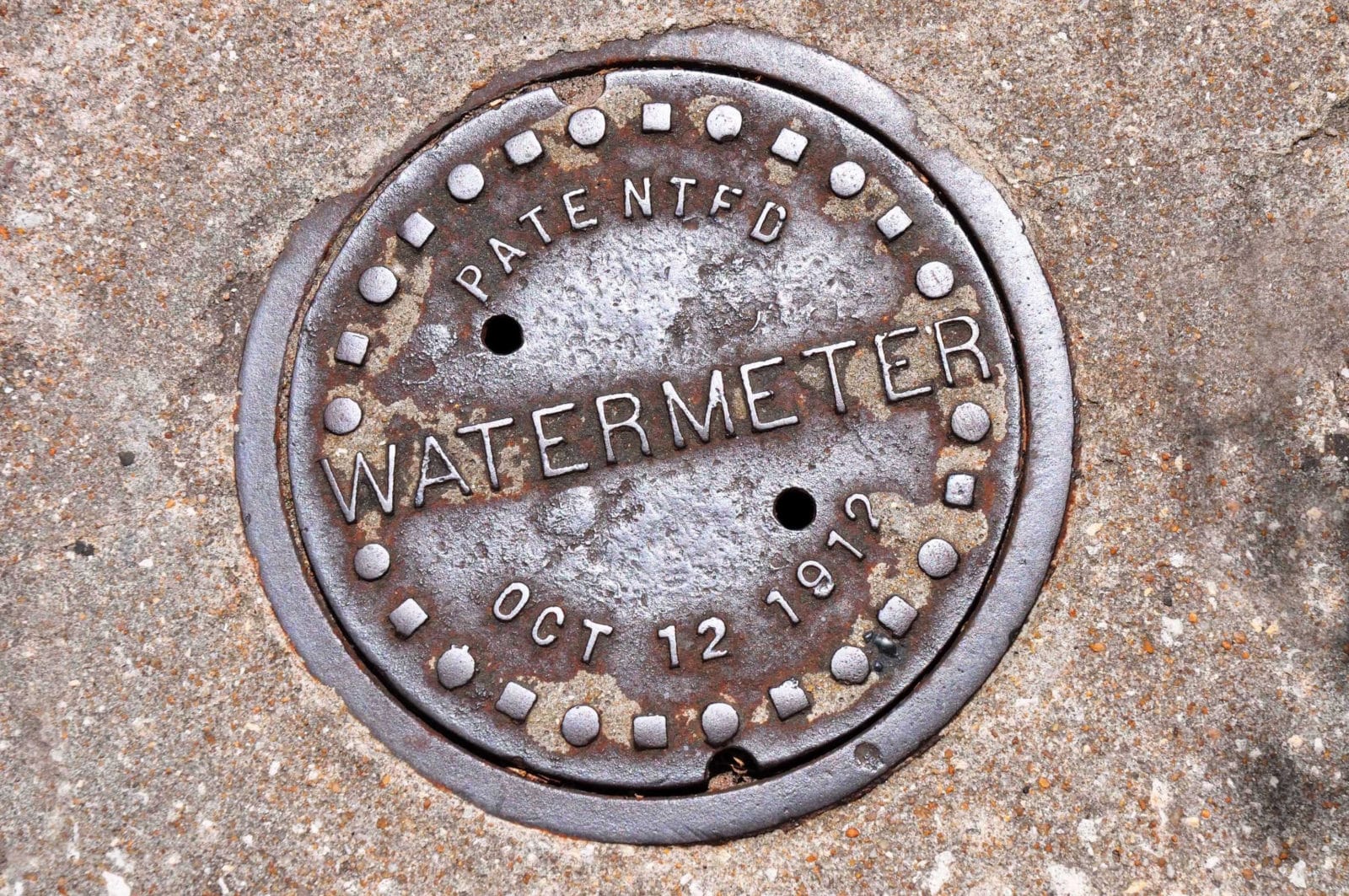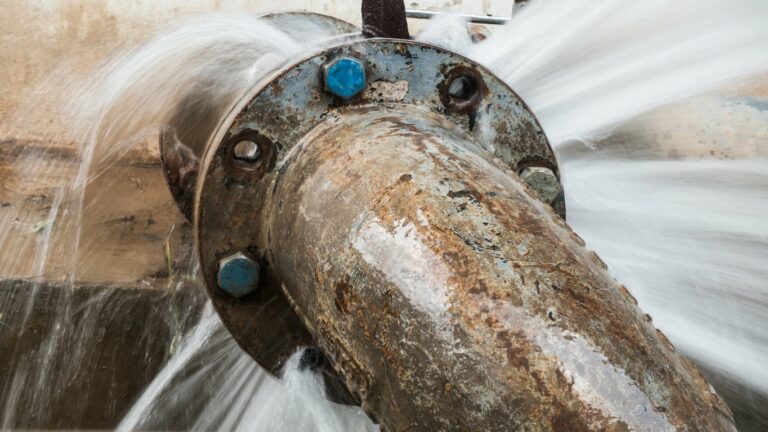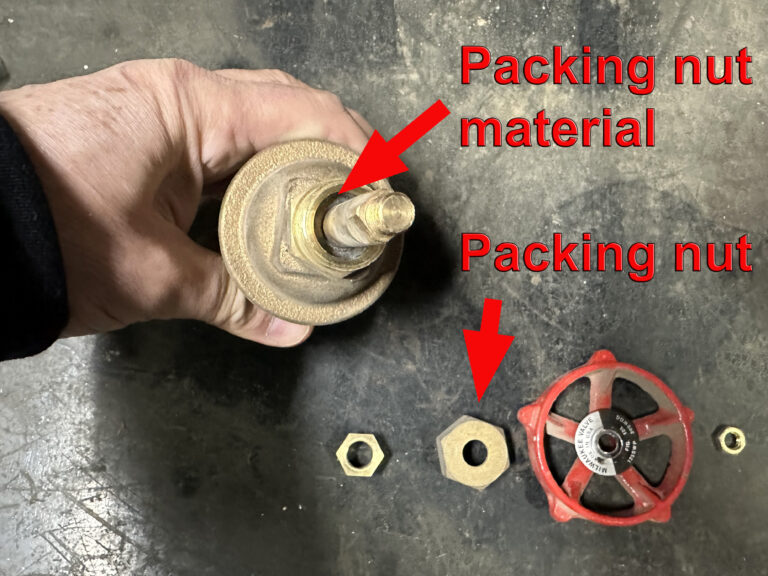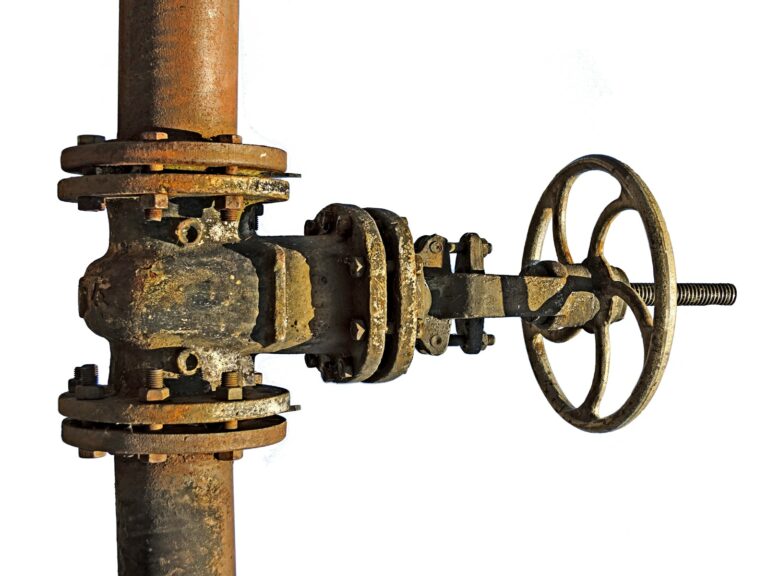We all know what a water meter is, but do we know how a water meter works? As the name suggests, a water meter can be simply defined as a tool to measure a consumer’s usage of water in a given location. It can be installed in both residential and commercial properties, so utility companies can charge for water usage based on the reading from the water meter.
Other than for for billing purposes, a water meter can be used for leak detection, or to control water usage during drought conditions. The instrument either measures the volume of water usage in gallons or cubic feet. In many cases, a water meter is a vital component of proper leak testing.
In a residential property, a water meter can be installed in either the inside or outside of the house. In NYC it is far more common for water meters to be installed inside a building. If installed inside, you will usually find it just past the main control valve on the water line that enters your residence.
Water Meters Located Outside of a Building or Home
If installed outside the house, it can be in a meter pit on the lawn or under the sidewalk area. In the meter pit, the water meter is housed in a box with a metal lid that is usually marked “WATER METER”. Some boxes have hinged covers, while others have a screwed metal cover to help prevent tampering. A periodic check is necessary for outdoor water meters. That is because extreme weather conditions and other factors can disrupt the water meter’s functionality.
Reading A Water Meter Properly
The design of water meters, and how a water meter works, has changed over time. However, the major functionality and characteristics remain the same. Some modern water meters use digital displays. Many modern meters are read remotely by the water authority to determine billing, and even to notify of possible leaks or excessive use. Therefore the measuring mechanism can be different between models, but all water meters display only two things: volume of water used and flow rate. In NYC, the DEP provides a list of approved water meters.
• Analog Display
There are three major measuring devices in an analog water meter including total water usage, sweep hand, and low-flow indicator. Total water usage is displayed in numbers to indicate volume in either cubic feet or gallons. In the picture shown on the left, the volume of water used is 1,356,411 gallons.
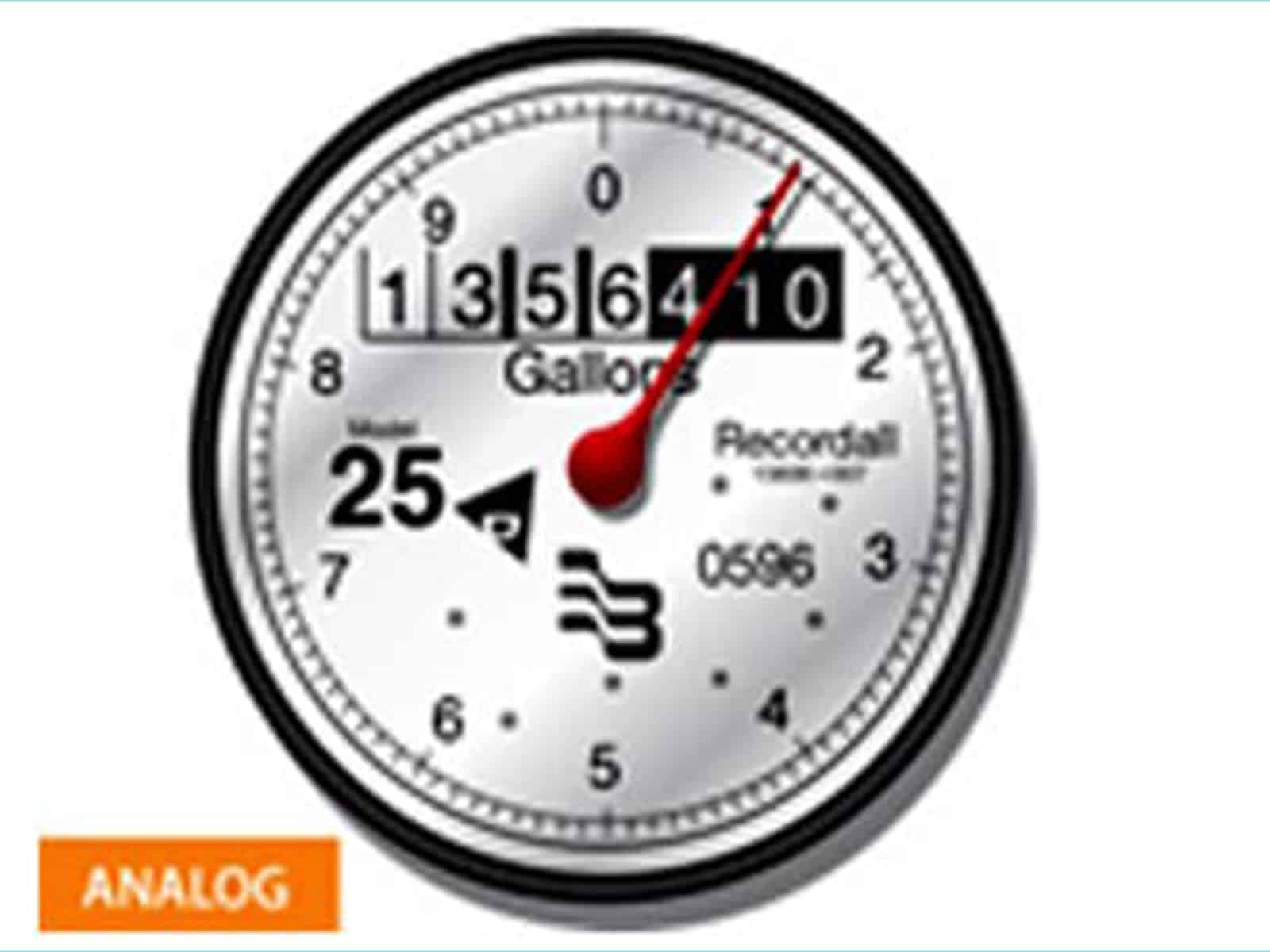
The last digit on the right is a static 0; it does not change. The last digit is shown by the red sweep hand. In the picture, the sweep hand points to the number 1, hence 1,356,411 gallons. When the sweep hand points to “5”, the total volume used will be 1,356,415 gallons. A complete rotation of the sweep hand represents usage of 10 gallons of water. The low-flow indicator is a small triangle; when the indicator is rotating, it means you have water flowing to your property.
• Older Analog Model
The picture on the right is a more traditional version of a water meter. Instead of using a single analog dial and a numerical display, it uses multiple dials to provide the reading. It is more difficult reading an older analog water meter in that all the various dials must be tabulated. This feature is one of the older analog water meters disadvantages. This style of water meter is not very common in modern plumbing systems. However, this model is still available and provides a good example of how a water meter works.
The reading starts at the 100,000 dial and is read in a clockwise direction. When the hand is between two numbers, you use the smaller number of the two. Every dial uses divisions of 10, and every other dial turns counterclockwise. The water meter registers 806,323 cubic feet. Adding all of the dials together is how to calculate the volume of water in total.
• Digital Water Meter
A digital water meter requires light for activation and provides a different example of how a water meter works. A person can actually shine a flashlight on the instrument to activate this type of meter. There is no dial to read because everything is shown in a numerical display. It can provide a reading in either gallons or cubic feet, and the flow rate is determined by the volume of usage per minute.
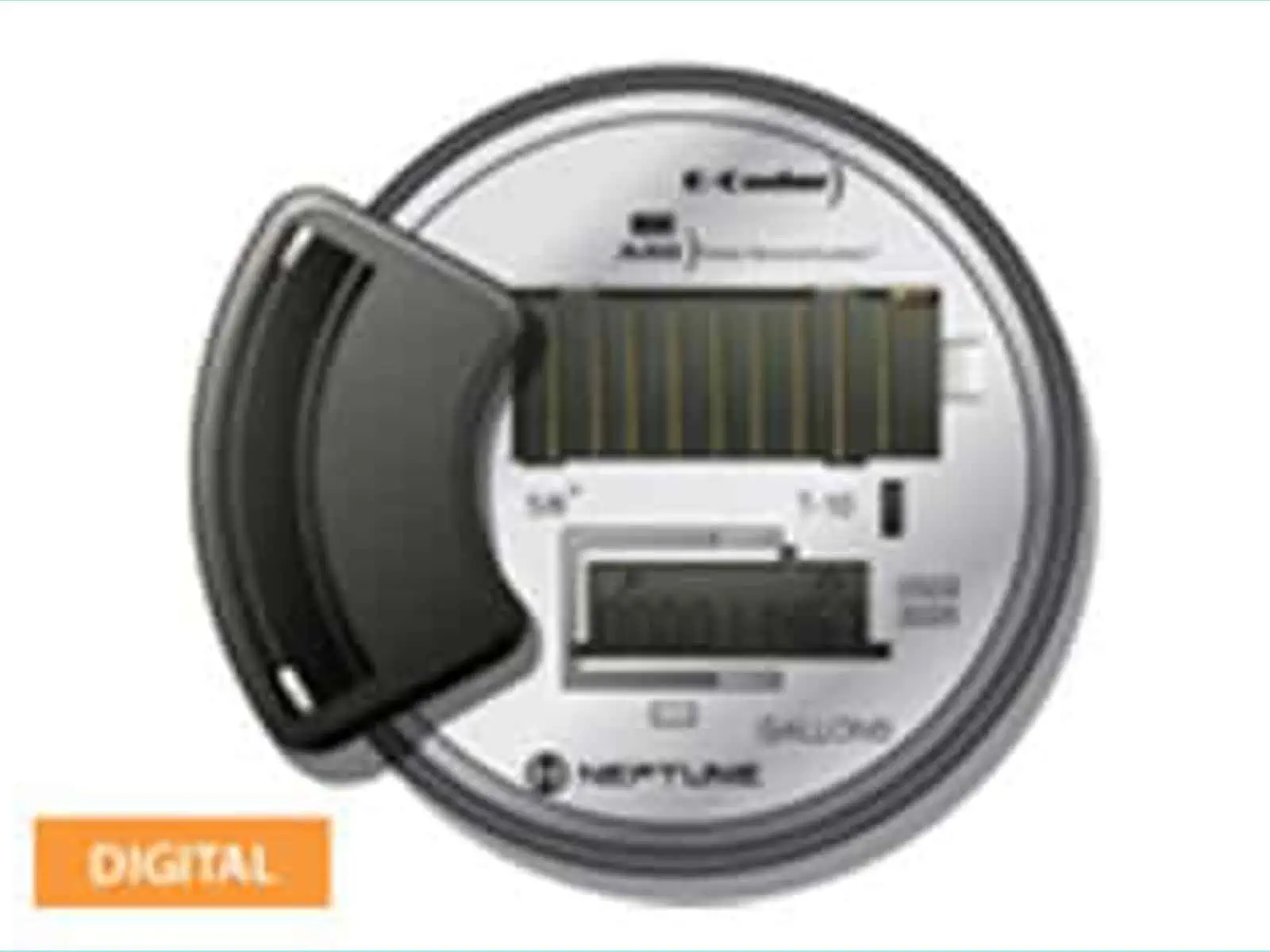
An instruction manual should be packaged with the instrument, so you can always refer to the manual for details. Some models have a history feature to track water usage in the past, which is one of a digital water meters advantages. This now includes time of day, which makes it much easier to realize if a water leak is present.
How A Water Meter Works: Water Meter Accuracy
Many factors affect the accuracy of a water meter including age, possible blockage, pipe leaks, and the mounting position. In new condition, a water meter measures the volume of water usage with 98 to 100 percent accuracy. After years of wear and tear, a water meter can register an incorrect number. But you can always have the water meter tested by the utility company or a plumber to make sure of its accuracy.
Water Leak Detection
The easiest way to check for a leaking pipe is to use the low-flow indicator on the water meter. To do a water leak test you need to shut off all faucets and appliances that require water from the pipeline. If the low-flow indicator is still rotating, it means there is water running through the meter but not exiting through an open faucet. Most commonly a running toilet is the culprit. But sometimes the leak can be caused by very a small hole, and it is more difficult to figure out.
To make sure there is a leak, take a look at the sweep hand and remember the position; take pictures if necessary. After two or more hours with no usage of water at all, check the water meter again. If the sweep hand moves to a higher number, you have a minor leak. Always remember that with the rapidly increasing cost of water, even a small leak can add greatly to your water bill.
How A Water Meter Works
How a water meter works depends on the style, purpose, and size of the meter. Domestic water meters come in three different models including Electromagnetic, Mechanical Insert, and Ultrasonic. Each has a different measuring mechanism, but all indicate the same thing. Every model has its advantages and disadvantages as briefly outlined below.
• Electromagnetic Meter

This model harnesses electrical voltage to determine water usage. A section of pipe inside the meter is surrounded by magnetic fields and electrodes. When water or conductive fluid passes the pipe, the fluid creates electrical voltage. The electrodes will detect and measure the electrical voltage generated by the water. Because fluid velocity is proportional to electrical voltage, the voltage is converted to a flow rate.
• Mechanical Insert Meter

It uses the more traditional measuring mechanism. The water meter has an impeller that rotates as water flows through it. The impeller rotation can be translated to volumetric reading based on a pre-calibrated and security-sealed device. To produce an accurate reading, the water meter has to be full of water.
• Ultrasonic Meter

An ultrasonic meter is also commonly referred to as Velocity Meter. It uses electronic sensors to measure water velocity and convert it to flow rate. There are two transducers on the pipe to calculate velocity using the transit time method. Velocity is calculated based on differences in time for an impulse to hit a transducer to another one.
Repairing Or Reusing Old Water Meters
The vast majority of water meters for domestic use are 1″. Sizes can range from 3/4″ to 2″ for residential properties. Meters of this size only typically cost from $150.00 to $250.00. The cost of resetting a meter and making it legal for reuse outweighs any potential cost savings. Therefore when meters are moved for water line upgrades, water line disconnections, or due to failure, they are discarded.
Larger Water Meters are More Advantageous to Rebuild or Repair
In some rare cases, usually extremely large specialty meters, someone may attempt to rebuild and reset a meter. But just like many of our possessions nowadays, water meters have become throw-away objects. Frequently costing more to repair than to replace.

